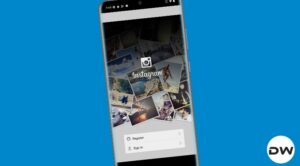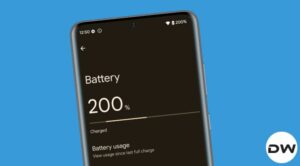In this guide, we will show you the steps to fix the pixelated and distorted image issues in Google Chrome. This offering from the Silicon Valley giants checkmarks most of the prerequisites with ease. Its deep integration into the Google ecosystem and the cross-device support usually makes it the go-to choice for many users. Moreover, it also gets blessed with updates at regular intervals. Though you wouldn’t get new features with each update, there are definitely some performance and security enhancements.
![]()
However, in some instances, a few bugs and issues might creep in as well. And this is what seems to be the case this time around. Various users have reported that the images are now appearing pixilated and distorted in the Chrome browser. This has affected all the websites, including the likes of Google search icons, YouTube thumbnails, and Twitter images. In the below image, the clock and magnifying glass to the left of search results as well as the Google icon at the top left are pixelated.
![]()
The issue came to light only after users updated their browser to the latest build. In this regard, they have tried other Chromium browsers like Edge and Opera, but those are free from this issue, hence Chrome seems to be the culprit. With that said, there do exist a couple of workarounds that has been known to fix the pixelated and distorted image issues in Google Chrome. And in this guide, we will make you aware of just that. Follow along.
Table of Contents
How to Fix Images appearing pixelated in Google Chrome
![]()
There exist two different methods to rectify this issue, and we have listed both of them below. Try them out and then see which one works out in your favor.
FIX 1: Disable Hardware Acceleration
Chrome’s Hardware Acceleration features shift a part of the browser’s workload and dependencies from the CPU over to the GPU. This will free up some CPU resources which in turn could be allocated across some other tasks. On paper, it should speed up your browser’s performance but in practical terms, its perks have always been a matter of debate. But what isn’t debatable is the fact that turning off this feature seems to have fixed the pixelated and distorted image issues in Google Chrome. So let’s put this fix to test and check out the result.
- Launch the Chrome browser on your PC and head over to the below location:
chrome://settings/system
- Then turn off the toggle next to Use hardware acceleration when available.

- After that, click on the Relaunch Now button. The browser will now restart with the said feature being disabled.
- Check if it fixes the underlying issue or not. If your answer is in a negative tone, then re-enable the feature and move over to our next fix.
FIX 2: Disable GPU Rasterization
GPU Rasterization is the process of converting an image (stored as an outline) into pixels which can then be displayed on your screen. By default, this feature is enabled in Chrome, which for some users proved to be the root cause behind this issue. So let’s disable it via one of the Chrome flags (experimental feature section) and then see if it works out or not.
- Launch Chrome, copy-paste the below location in its address bar, and hit Enter:
chrome://flags
- This shall take you to the Flags page. So head over to its Search bar and type in the following flag name:
GPU rasterization

- Then click on its current state (which will be Default) and select Disabled.
- After that, click Relaunch from the bottom menu that appears.
- The browser will now restart and the issue would have been resolved.







